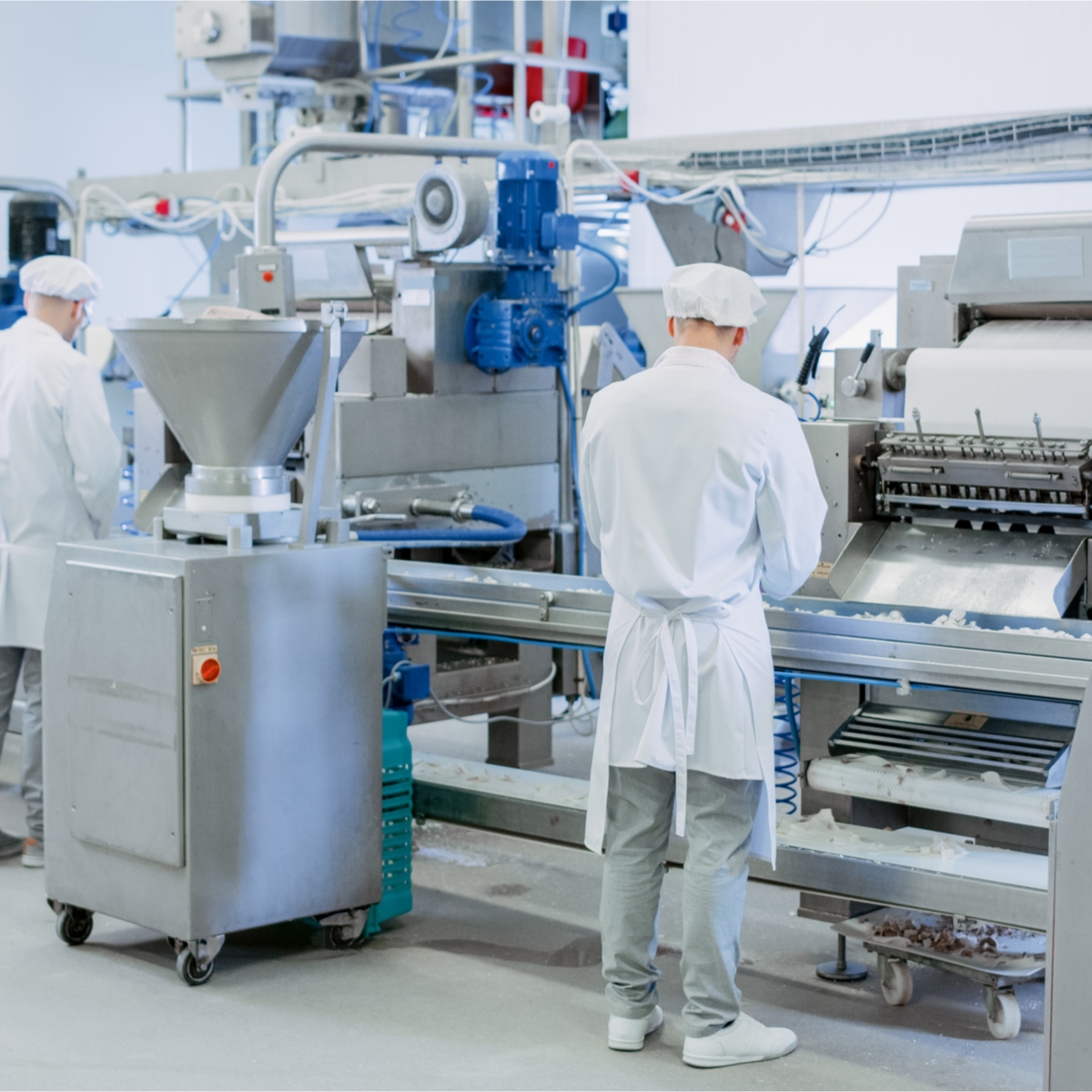
Food processing facilities have to keep quality standards extremely high to ensure that the products they produce are safe and high-quality. Food processing facilities face additional risks not seen in many other manufacturing facilities, such as contamination and foodborne illnesses. When thinking about the HVAC for food processing plants, three key variables must be considered:
- Air Quality
- Temperature
- Humidity
Related: Signs Your HVAC May Need Repair
Air Quality
HVAC systems with unfiltered air can be a very serious concern in food processing facilities. Unfiltered air recirculation can lead to pathogenic contamination. In fact, many food processing incidents in the past few years have been traced back to facilities with poor (or zero) filtration. HVAC systems for food processing should be designed so that all of the air going into the facility is conditioned and filtered before it reaches the space.
One number to pay attention to is ACH - Air Changes per Hour (ACH). This number represents the number of times in one hour that all of the air in a space will get pulled through the HVAC system. The higher the number, the faster the air is moving through the facility. For food processing plants, it’s important that this number is at 15 ACH or higher. The higher number means the air is filtered more quickly, but the operating costs for the HVAC system will go up as well. Another thing to keep in mind is the concentration of allergens or contaminants. To keep workers safe, higher ACH may be required in spaces with a higher concentration of allergens or contaminants. Keeping staff workers safe should be the top priority for any food processing facility.
Temperature and Humidity
Keeping temperature and humidity under control is extremely important for a food processing facility. High temperature, or high humidity excursions, can ruin your product, decrease its shelf life, or cause contamination and spoilage. The temperature and humidity within a space is affected by the conditions surrounding the space and what is brought into the space. If it is really hot outside, the HVAC system will have to work harder to keep it cool on the inside. If a lot of hot products are brought into a cool space, the HVAC system will have to work harder to cool down all the products as well. If the HVAC system is not sized properly, it may not be able to keep up.
For cool or refrigerated environments, humidity can become a major concern. If the humidity in the space gets too high, liquid water or ice can form on surfaces or products. Both liquid water and ice can be dangerous for the people working in the area. If it forms on the product, the product may be spoiled - and it will lose quality at the very least. A dedicated industrial dehumidifier may be required as part of the HVAC system in order to keep the space under control.
Typically, an engineer will help determine what size the HVAC system needs to be (based on how the facility will be used). If the facility’s needs begin to change (for example, if a different type of product is being produced) the HVAC system may need to be upgraded to match the new conditions. To keep the system running as designed, it’s important that the HVAC system is put on a preventative maintenance program.
Preventative Maintenance is Key
To make sure that the HVAC system works as designed, even years after it is first installed, proper maintenance is key. Preventative maintenance has many benefits for your facility, including less unexpected downtime and lower overall cost of ownership. Building a preventative maintenance schedule into your facility’s maintenance plan will help reduce headaches down the road and keep your facility productive.
One of the most important maintenance tasks is ensuring that the filters in the HVAC system are changed on a regular basis. Keep in mind the MERV rating of the filters being replaced. Higher MERV ratings mean the filters are more efficient and provide cleaner air to the facility. The downside of higher MERV ratings is that the more efficient filters are harder for the HVAC system’s fan to pull air through. It is important that the system is designed for higher MERV filters if increased air quality is important. Filters should only be replaced with new filters of the same MERV rating unless further analysis has been done.
Leaks in ductwork can also be a serious problem for food processing facilities. Check for leaks on both the return and supply sides of the HVAC system. Foil tape can be used to quickly patch small leaks, but for larger problems, the ductwork may need to be replaced. Check for any damage around possible leak areas. Condensation can form near leaks in supply air ductwork, which can lead to additional problems if not dealt with.
Food processing facilities have a commitment to air quality and cleanliness that most other facilities don’t have to worry about. These higher standards can sometimes be difficult to meet, especially when problems arise. Luckily, Tate’s team of experts knows just what needs to be done. Reach out today.
